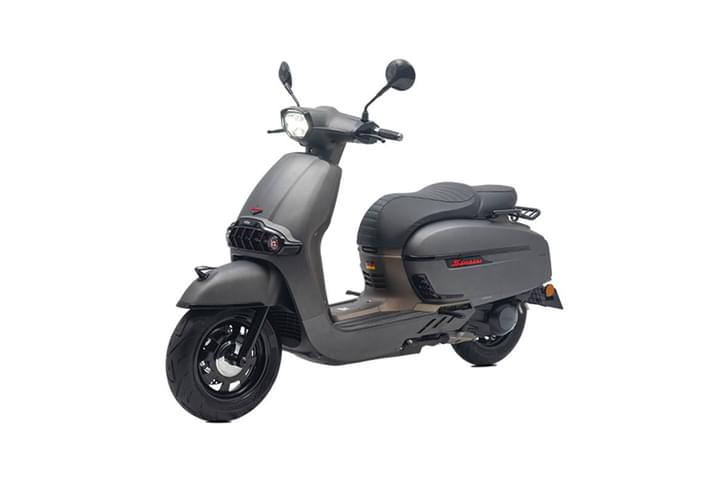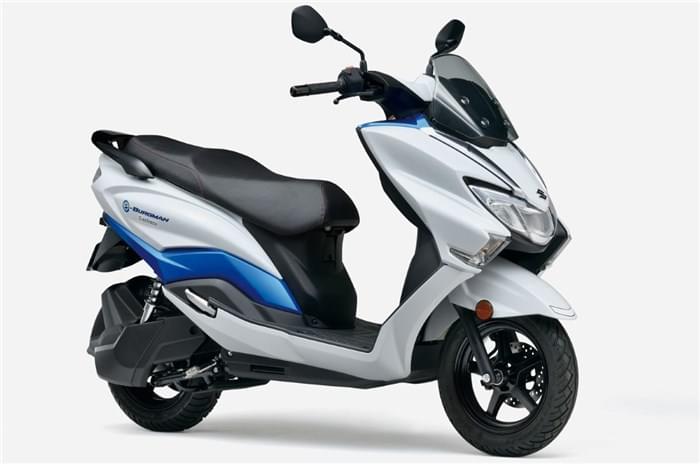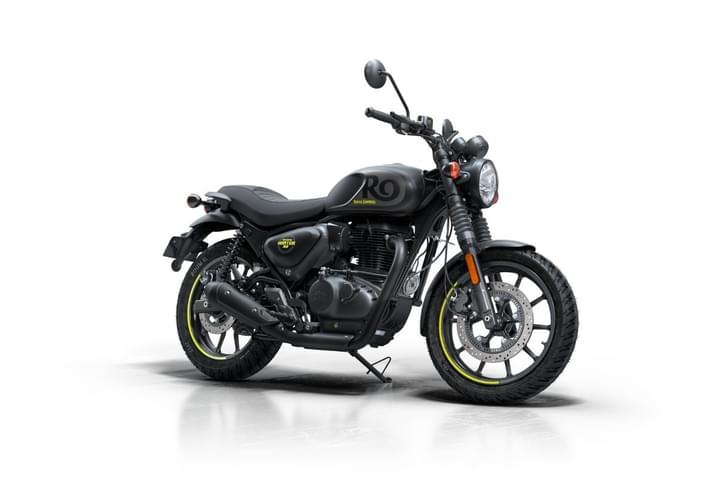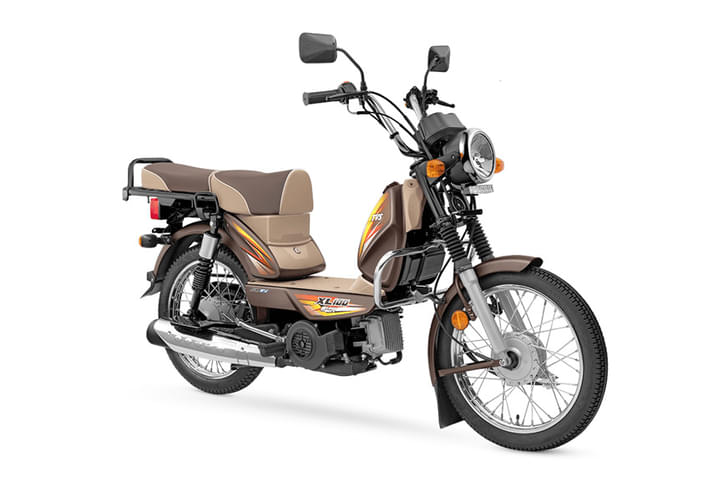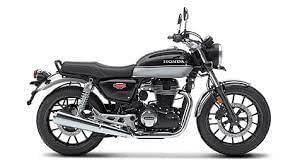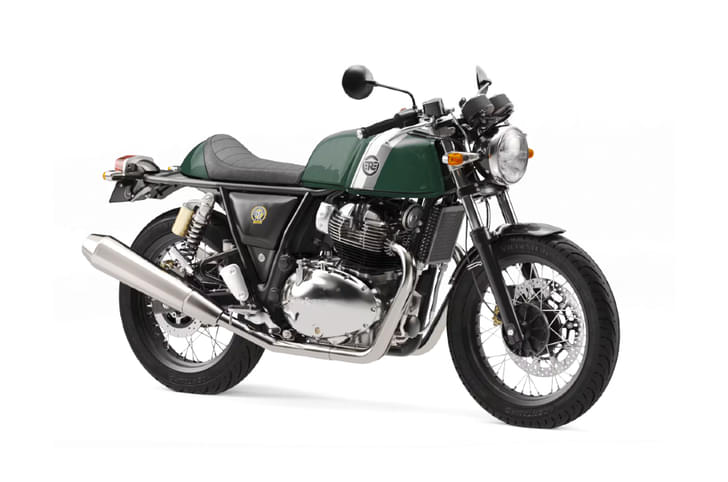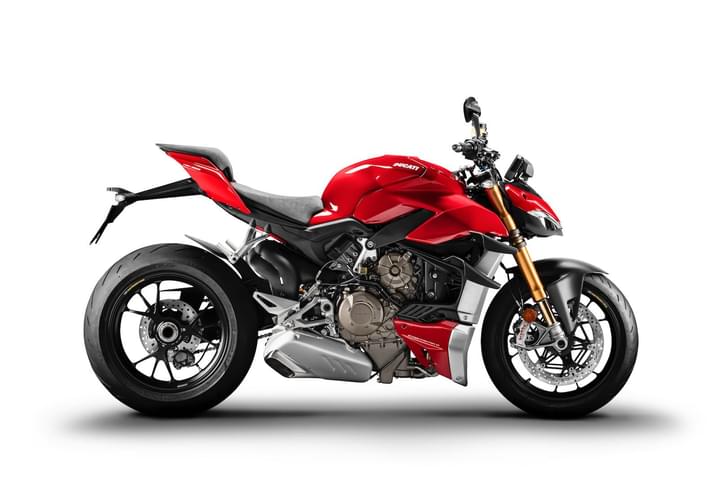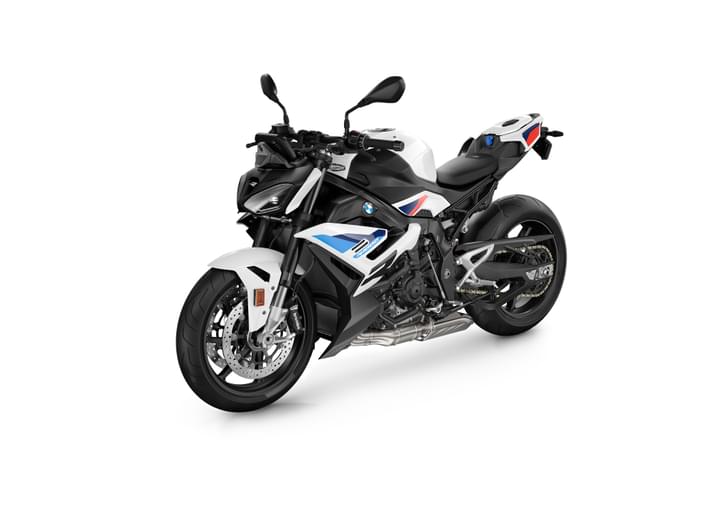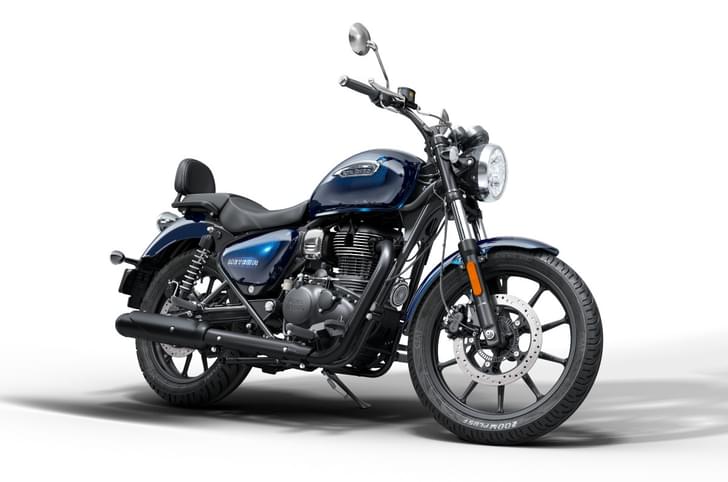A 250cc bike is one of the more budget-friendly and flexible options for those with a one-bike garage (and India is still very much a one-bike household) because these machines are easy enough to live with in big city chaos and engaging enough to keep you grinning when you emerge from its confines. That’s exactly how we tested two of the faired contenders in this segment: the Bajaj Pulsar F250 and the Suzuki Gixxer SF 250. So, which is the better option?
Bajaj Pulsar F250 vs Suzuki Gixxer SF 250 comparison: design, features, fit and finish
Visually, the biggest separator between the two is the different approaches taken to the design philosophy. The Gixxer has a full fairing that hides most of the underpinnings from view and it cuts a very clean, uncluttered silhouette, especially in this gorgeous MotoGP-inspired colourway – even though they don’t partake in that series anymore, sigh!
The Pulsar, on the other hand, has a semi-faired design, which leaves the engine and exhaust piping in plain sight. That’s not a bad thing, as there are no unsightly wires, hoses or panel gaps in sight, which is quite commendable. However, I do wish the design was more catchy and that there were more colours on offer for the dual-channel ABS version of the Pulsar F250 we have here (you only get it in this all-black scheme).
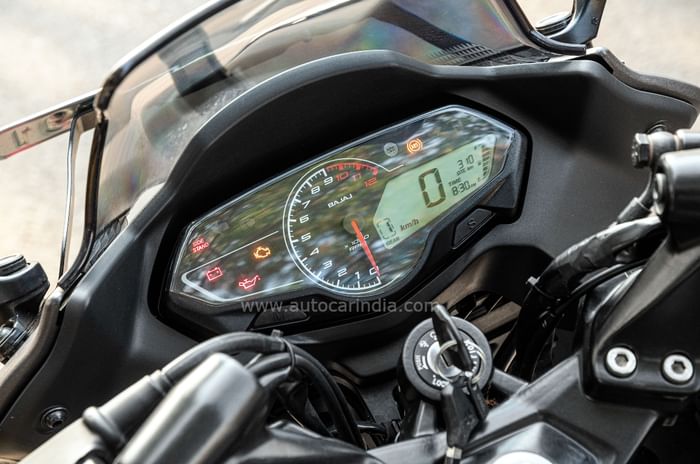
The digi-analogue cluster on the Pulsar, while simpler and sans Bluetooth connectivity, is more pleasing to look at than the Gixxer’s unit, which is the same one that’s on all made-in-India Bluetooth-equipped Suzuki products. Plus, the Pulsar’s cluster falls to the eye more naturally, unlike the Gixxer’s, where you have to look down to see it. Another nitpick is that when the Bluetooth connectivity function isn’t in use, there’s a lot of empty space on the Gixxer’s dash. The Bluetooth connectivity feature works quite well but MapmyIndia isn’t as intuitive as Google Maps.

Fit and finish levels are decent, but there are a couple of qualms on both. In the case of the Pulsar, the right rear-view mirror kept coming loose and would need to be tightened every so often. On the Gixxer, the side-stand sensor wasn’t plugged in correctly, so the engine wouldn’t cut off when the bike was in gear with the side-stand down. Neither is a dealbreaker, but, on what were brand-new bikes, this did somewhat dampen the experience a little.
Bajaj Pulsar F250 vs Suzuki Gixxer SF 250 comparison: performance, mileage
The perfect embodiment of the adage, “Don’t judge a book by its cover”, is the Pulsar’s engine. Despite featuring simpler 2-valve architecture, compared to the more modern 4-valve Suzuki engine, we found the Bajaj engine to be the smoother unit.
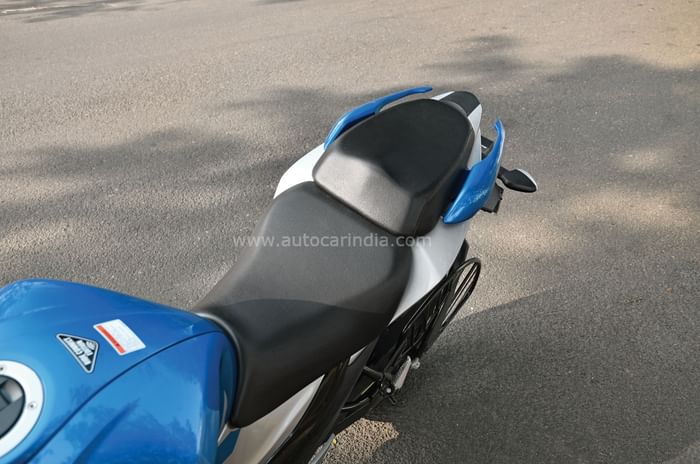
What’s quite unexpected is that despite having an extra cog over the Pulsar, the Gixxer actually sits at a slightly higher RPM when cruising at 100kph in top gear (6,800rpm vs 6,200rpm on the Bajaj). The Pulsar is definitely the smoother and more refined of the two bikes here.

While the Pulsar has the smoother engine, the Gixxer’s engine definitely ranks higher when it comes to the fun quotient. It’s a rev-happy motor and post 7,000rpm, it really comes alive. If you just want out-and-out performance from your 250cc bike, the Gixxer is definitely the way to go. During our testing runs, the Gixxer managed the sprint to 100kph in 8.58s, while the Pulsar was over a second slower, taking 9.86s. In terms of roll-on acceleration, the Gixxer is a good deal quicker as well. The Suzuki also manages to be more fuel-efficient, managing to return 43.48kpl (combined) compared to the 40.81kpl figure of the Bajaj.
Bajaj Pulsar F250 vs Suzuki Gixxer SF 250 comparison: comfort, ride and handling
The nature of the respective engines also dictates the way both bikes seat you. On the Gixxer, your upper body is canted forward a bit more and the seat-to-peg distance is just about adequate. The Pulsar is more upright, gives you more room to move around and is the more comfortable bike, especially in stop-and-go city traffic. Neither is uncomfortable in absolute terms, but ride them back-to-back and the Pulsar is definitely the more comfortable bike. Another thing that makes life a whole lot easier in the city on the Pulsar is the extremely light clutch lever action, despite not missing out on delivering a good feel and feedback to the rider. The Gixxer’s clutch is not heavy by any means, but the Pulsar’s is so light that I could squeeze it using just my pinky finger.

In the twisty bits, both are quite fun and evenly matched in terms of their handling capabilities, despite the Pulsar running on skinnier rubber than the Gixxer. On the patchy roads in and around Mumbai where we tested these bikes, the Gixxer had me unsettled a little more than the Pulsar, which had a more composed and controlled ride. The Grimeca brakes on the Pulsar were easier to modulate and had a bit more initial bite than the Gixxer’s Bybre units, and the Suzuki’s front brake lever had a bit too much play, for my liking. Neither bike lacked stopping power (evident in the near-identical stopping distances in our tests), but we preferred the Pulsar’s brakes.
Bajaj Pulsar F250 vs Suzuki Gixxer SF 250 comparison: verdict
The Pulsar F250 is the more refined and comfortable bike here, while still being reasonably close in terms of real-world performance to the Gixxer SF 250, which neatly brings me to the Rs 50,000 elephant in the room. At Rs 1.5 lakh, the Bajaj Pulsar F250 is temptingly priced and it actually costs just a few thousand rupees over the smaller 150cc Gixxer SF. The Suzuki Gixxer SF 250 is a great bike in its own right, but at its asking price of Rs 2.02 lakh, it fails to justify this sizeable premium it demands over the Pulsar. It’s a real shame that the Indian market hasn’t taken to the Pulsar F250 with as much gusto as it did with the 220F, and hopefully, more people will flip through the pages of this massively underrated book before writing it off.
| Specifications & test numbers | ||
|---|---|---|
| Bajaj Pulsar F250 | Suzuki Gixxer SF 250 | |
| Rating | 8/10 | 7/10 |
| Price (ex-showroom, Delhi) | Rs 1,49,978 | Rs 2,02,500 |
| Power | 24.5hp at 8,750rpm | 26.5hp at 9,300rpm |
| Torque | 21.5 Nm at 6,500rpm | 22.2 Nm at 7,300rpm |
| Gearbox | 5-speed | 6-speed |
| Wheelbase | 1351mm | 1345mm |
| Seat height | 795mm | 800mm |
| Fuel capacity | 14 litres | 12 litres |
| Ground clearance | 165mm | 165mm |
| Front suspension | 37mm telescopic fork | 41mm telescopic fork |
| Rear suspension | Monoshock | Monoshock |
| Brakes (f/r) | 300mm disc/230mm disc | 300mm disc/220mm disc |
| Tyre sizes (f/r) | 100/80-17/130/70-17 | 110/70-R17/150/60-R17 |
| Acceleration | ||
| Kph | Sec | Sec |
| 0-60 | 3.77 | 3.69 |
| 0-100 | 9.86 | 8.58 |
| Roll-on acceleration | ||
| 20-50 kph | 2.77 | 2.54 |
| 30-70 kph | 5.11 | 4.31 |
| 50-80 kph | 4.86 | 3.95 |
| Braking | ||
| 60-0 kph | 18.32m | 18.30m |
| Fuel efficiency | ||
| Cty | 37.87 kpl | 41.31 kpl |
| Highway | 43.75 kpl | 45.65 kpl |



















